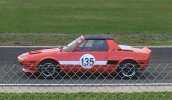Dr.Jeff
True Classic
The hill climb car with huge wings pictured earlier brought up a interesting YouTube Channel:
https://www.youtube.com/channel/UCCWPy8e7TkqGZH4zt4TiTNw/videos
It has a bunch of action videos of hill climb cars of all types (including that very same car). Some have very little aero, others a ton. But plenty of fun footage to watch either way.
https://www.youtube.com/channel/UCCWPy8e7TkqGZH4zt4TiTNw/videos
It has a bunch of action videos of hill climb cars of all types (including that very same car). Some have very little aero, others a ton. But plenty of fun footage to watch either way.
Last edited:


